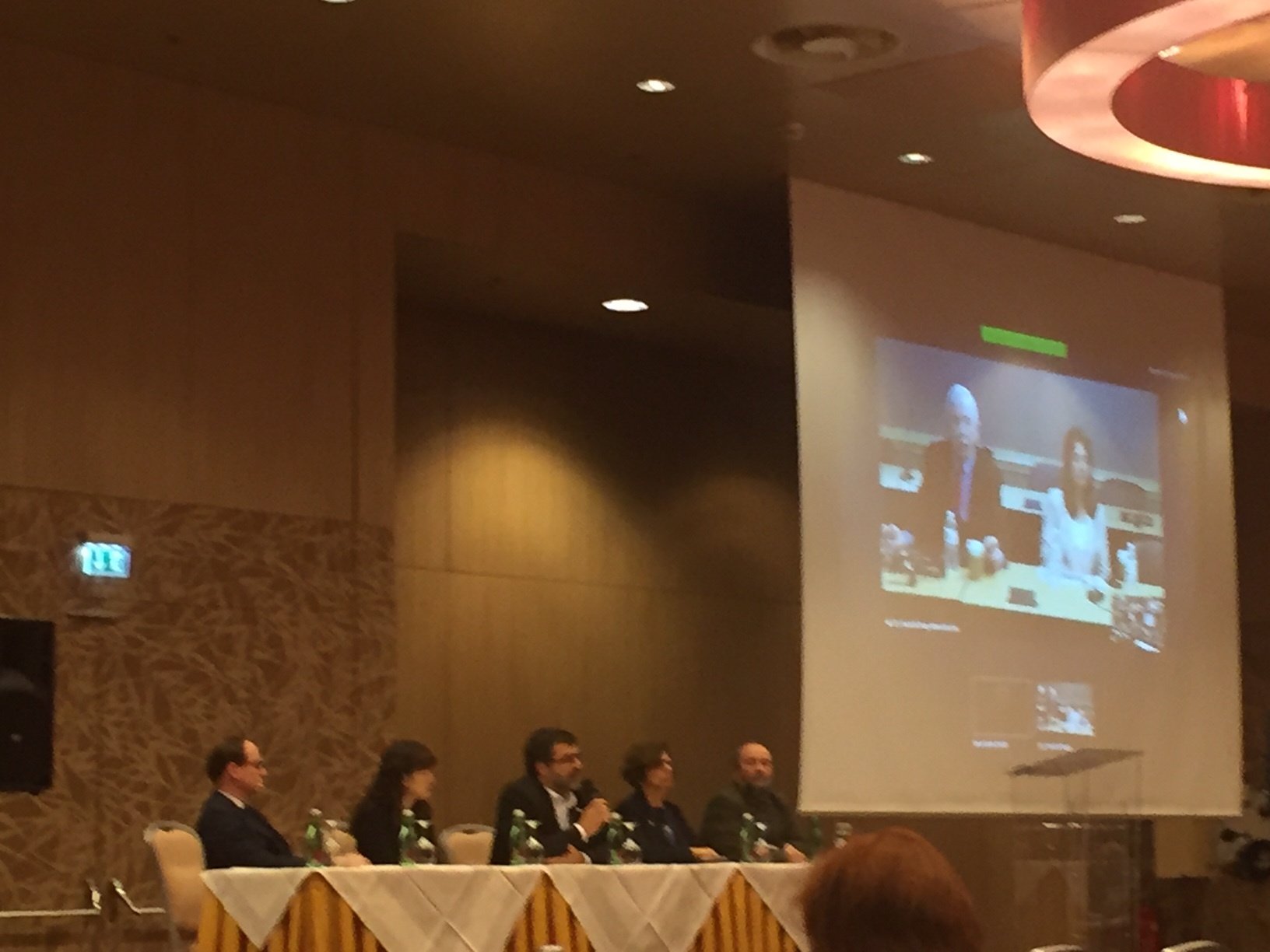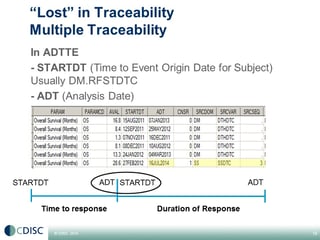Lost in Traceability- From SDTM to ADaM

 Once upon a time Hansel and Gretel laid a trail of breadcrumbs which they followed to find their way back home. Their story can be an allegory for the concept of traceability in clinical data where we need to lay a clear path to ensure that the results we have created can be reproduced. This blog looks at some aspects of a presentation Lost in Traceability by Angelo Tinazzi at the CDISC EU Interchange.
Once upon a time Hansel and Gretel laid a trail of breadcrumbs which they followed to find their way back home. Their story can be an allegory for the concept of traceability in clinical data where we need to lay a clear path to ensure that the results we have created can be reproduced. This blog looks at some aspects of a presentation Lost in Traceability by Angelo Tinazzi at the CDISC EU Interchange.
What is traceability?
The Analysis Data Model Implementation Guide v1.1 – February 2016 defines it this way:
‘The property that enables the understanding of the data’s lineage and/or the relationship between an element and its predecessor(s).
Traceability facilitates transparency, which is an essential component in building confidence in a result or conclusion.
Ultimately, traceability in ADaM permits the understanding of the relationship between the analysis results, the ADaM datasets, the SDTM datasets, and the data collection instrument.
Traceability is built by clearly establishing the path between an element and its immediate predecessor. The full path is traced by going from one element to its predecessors, then on to their predecessors, and so on, back to the SDTM datasets, and ultimately to the data collection instrument’
Further definitions may be found in The FDA Study Technical Conformance Guide – March 2016 and ICH E6 GCP Section 2.10 “GCP Principles”. In common, all these definitions provide a rationale of why traceability is needed- namely to ensure transparency and understanding. They also stipulate what you should be able to trace back, and importantly how.
Traceability is a two way process. A regulatory reviewer wants to be able to trace a clear path from the Analysis results, to the ADaM, to the SDTM and back to the CRF. When planning upfront within the trial, we conversely want to create a clear and traceable path forwards from the CRF through the SDTM and ADaM and on to the Analysis results.
Data Point Traceability vs Metadata Traceability
It’s important to distinguish between data point traceability and metadata traceability. Where datapoint traceability points directly to the specific predecessor record(s), metadata traceability facilitates the understanding of the relationship of the analysis variable to its source dataset(s) and variable(s). Metadata traceability is established by describing the algorithm used or steps taken to derive or populate an analysis variable from its immediate predecessor. Metadata traceability is also used to establish the relationship between an analysis result and ADaM dataset(s). Guidance states that datapoint traceability should be implemented if ‘practical’ and ‘feasible.’ Judgement needs to be used in respect of this ‘practicality’ and ‘feasibility’. In cases where only a very complex method will allow for datapoint traceability to be observed, we have to make a decision as to whether metadata traceability is the most viable option.
Broken Traceability
There are situations where traceability can break down. Here are a couple of examples:
Multiple Traceability
Multiple traceability is not currently supported by the available standards / tools. An example of this is where you have a time to event endpoint for which the starting point might not necessarily be the date of randomization or the first exposure date. The example to the right is from an oncology endpoint, (duration of response), where the starting point is the occurrence of another time to event point( time to response).
Integration
Traceability in CDISC content assumes you are following a linear process, and as such, that traceability is broken when a linear process is not used. For example, where a decision is taken to migrate to SDTM retrospectively ( and eventually ADaM is re-derived from this SDTM). On these occasions, the CSR that was created prior to this decision will not of course be using the SDTM and ADaM- and it may therefore not be possible to reproduce the results. In this case different options should be considered when submitting data, including the re-creation of analysis results and/or the submission of the legacy data. When a linear process is not followed it's important to plan ahead and discuss possible strategies with the FDA reviewers, as well as submit a Legacy Data Conversion Plan and Report.
Wherever possible traceability should of course be planned ahead of time. By observing good practice of traceability and ensuring all documentation is in place the reviewer should be able to understand what you have done (without asking!!).
To download the slides and learn more technical details click below.
Further Reading
Blog: 5 Hot Topics from CDISC EU Interchange 2016


